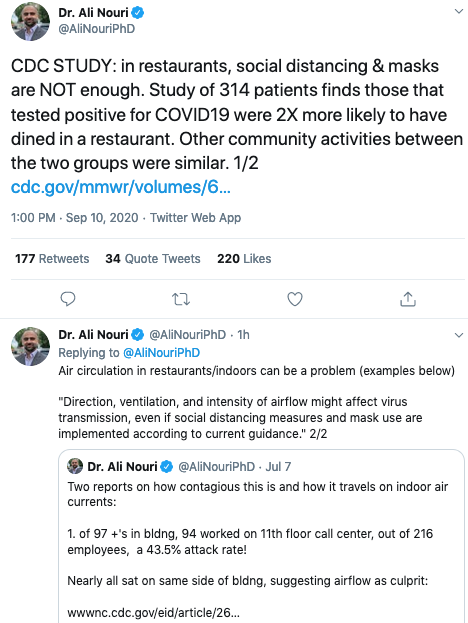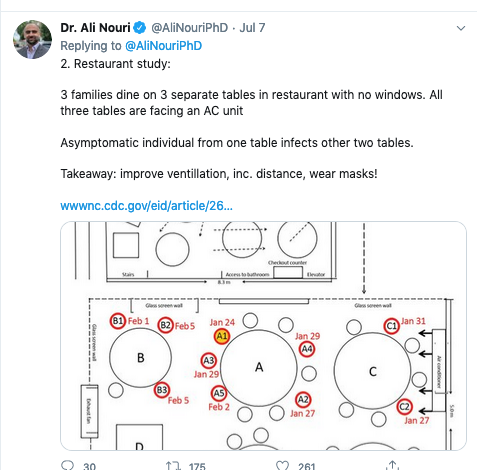Long before the pandemic swept into her village in the rugged southeast of Afghanistan, Halima Bibi knew the gnawing fear of hunger. It was an omnipresent force, an unrelenting source of anxiety as she struggled to nourish her four children.
Her husband earned about $5 a day, hauling produce by wheelbarrow from a local market to surrounding homes. Most days, he brought home a loaf of bread, potatoes and beans for an evening meal.
But when the coronavirus arrived in March, taking the lives of her neighbors and shutting down the market, her husband’s earnings plunged to about $1 a day. Most evenings, he brought home only bread. Some nights, he returned with nothing.
“We hear our children screaming in hunger, but there is nothing that we can do,” said Ms. Bibi, speaking in Pashto by telephone from a hospital in the capital city of Kabul, where her 6-year-old daughter was being treated for severe malnutrition. “That is not just our situation, but the reality for most of the families where we live.”
It is increasingly the reality for hundreds of millions of people around the planet. As the global economy absorbs the most punishing reversal of fortunes since the Great Depression, hunger is on the rise. Those confronting potentially life-threatening levels of so-called food insecurity in the developing world are expected to nearly double this year to 265 million, according to the United Nations World Food Program.
Worldwide, the number of children younger than 5 caught in a state of so-called wasting — their weight so far below normal that they face an elevated risk of death, along with long-term health and developmental problems — is likely to grow by nearly seven million this year, or 14 percent, according to a recent paper published in The Lancet, a medical journal.
The largest numbers of vulnerable communities are concentrated in South Asia and Africa, especially in countries that are already confronting trouble, from military conflict and extreme poverty to climate-related afflictions like drought, flooding and soil erosion.
At least for now, the unfolding tragedy falls short of a famine, which is typically set off by a combination of war and environmental disaster. Food remains widely available in most of the world, though prices have climbed in many countries, as fear of the virus disrupts transportation links, and as currencies fall in value, increasing the costs of imported items.
Rather, with the world economy expected to contract nearly 5 percent this year, households are cutting back sharply on spending. Among those who went into the pandemic in extreme poverty, hundreds of millions of people are suffering an intensifying crisis over how to secure their basic dietary needs.
The pandemic has reinforced basic economic inequalities, none more defining than access to food.
‘Shock upon shock upon shock’
In South Africa, more than a quarter-century has passed since the official ending of apartheid, yet the Black majority remains overwhelmingly confined to poor townships that are far removed from jobs and services in the cities. When the pandemic emerged in March, the government ordered the shutdown of informal food vendors and township shops, unleashing the military to detain merchants who violated orders. That forced residents to rely on supermarkets — suddenly farther away than ever, given the lockdown of already woeful bus service.
At the same time, South Africa closed its schools, eliminating school lunches — the only reliable meal for millions of students — just as breadwinners lost their means of getting to jobs. By the end of April, nearly half of all South African households had exhausted their funds to buy food, according to an academic study. Social unrest eventually prompted a loosening of the country’s restrictions.
Far from a danger confined to the world’s poorest countries, hunger is a growing scourge even in the wealthiest countries. Previously working people who have never felt compelled to seek help are now lining up at food banks in the United States, Spain and Britain. Even people of relative means are cutting their purchases of fresh fruits and vegetables, while relying more on the cheap calories of fast food.
In wealthier countries, the economic strains are cushioned by government programs like unemployment benefits, subsidized wage plans and cash grants for food. In the poorest countries, the coronavirus is intensifying a litany of already potent afflictions.
“Covid has been yet another shock in what has been a terrible year in this region,” said Michael Dunford, regional director for East Africa at the World Food Program. “In addition to already having 21 million people acutely food insecure at the beginning of the year, we’ve then had flooding, locusts, and now we’ve got Covid. So it’s shock upon shock upon shock, which is just increasing vulnerability throughout the region.”
Just as the need for help intensifies, the threat of the virus is forcing relief agencies to scrap public health campaigns and limit their outreach. Lockdowns imposed to halt the pandemic will this year deprive 250 million children in poor countries of scheduled supplements of Vitamin A, elevating the threat of premature death, according to UNICEF. The supplements strengthen the immune system, limiting vulnerability to diseases that opportunistically exploit malnutrition.
The virus has also forced the delay of other immunization programs, which are typically combined with doses of deworming medicine — another bulwark against malnutrition.
“I’m increasingly concerned about the socioeconomic impacts of the pandemic on the nutrition situation of children,” said Victor Aguayo, chief of nutrition programs at UNICEF in New York. “It’s a perfect storm to see an increase in malnutrition rates if appropriate measures and programs are not put in place.”
Only the latest plague
In Juba, the capital of South Sudan, the pandemic was merely the most recent form of grave danger.
A sense of crisis has prevailed since a paroxysm of violence four years ago in a long-running civil war fueled by ethnic division. Amid the fighting, people fled the surrounding countryside for refuge in camps inside the city. Without access to their fields, many became dependent on food distributed by relief agencies along with anything they could buy at the market.
South Sudan was already one of the world’s poorest countries, with 80 percent of its roughly 11 million people living in a state of absolute poverty, surviving on less than $2 a day, according to the World Bank. The reinvigorated conflict posed an economic shock. As the government printed currency to pay its bills, runaway inflation resulted, dropping teachers’ salaries from the equivalent of $100 a month to $1.
Food prices soared. Most items were trucked in from neighboring Kenya and Uganda and priced in dollars, making them more expensive as the nation’s currency plunged. A 50 kilogram (110 pound) bag of corn flour that fetched $20 four years ago was more than $30 by late last year.
Poverty and hunger proved mutually reinforcing. As mosquito nets increased in price, that enhanced the risks of a lethal strain of malaria, which itself reduced appetites and worsened malnutrition among children.
Last year, heavy rains that fell in too short a time created torrential flooding that decimated crops and killed cattle.
By the beginning of 2020, roughly six million people in South Sudan were technically food insecure, meaning they could not reliably count on satisfying their dietary requirements.
“Nutrition is a lot more than food,” said Mads Oyen, chief of field operations for UNICEF in South Sudan, speaking by videoconference from Juba. “You’ve got malaria and measles and a lack of nutrients and other health issues. It’s about lack of clean water, which means cholera.”
This was all before the arrival of the worst pandemic in a century.
As the virus sowed chaos in transportation networks across East Africa, the price of staple foods sold in Juba leapt another 25 percent. At the same time, a lockdown imposed by the government derailed local businesses like food stalls, decimating incomes.
These were the forces that brought Mary Pica to a primary health care center in Juba in early May. It was run by the international relief organization World Vision. She carried her then-10-month-old son. He weighed only 5.4 kilograms (11.9 pounds), well below healthy.
Ms. Pica lived with her husband’s family in a household of nine people. Her husband had worked loading baggage onto buses. That job was a casualty of the fighting, as bus service largely shut down.
Her mother-in-law grew greens on a small plot of land outside Juba, using the proceeds to buy other items that balanced their diet — yogurt, fruit, fish and eggs. With the market closed, she could not earn cash. The family was subsisting almost entirely on greens. Ms. Pica, who had become pregnant again, was no longer breastfeeding her baby. He was wasting away.
The clinic provided her with a peanut-based paste donated by UNICEF. Every two weeks, she goes back to pick up another supply. The baby has been gaining weight.
But Ms. Pica sees dangers everywhere. Her sister-in-law’s child, a 2-year-old boy, has malaria. The pandemic is unrelenting.
“I’m worried,” she said, speaking in Arabic by phone from Juba. “I have no hope that the situation will change tomorrow. I can only pray to God that it changes.”
‘Money is the law’
Food prices have been rising in much of Africa for the same reason that Samuel Omondi has endured nearly six months without seeing his wife and five children in western Kenya — because of the chaos gripping the roads.
A father of five, Mr. Omondi, 42, makes his living driving a truck, typically hauling wheat. It used to take him four days to complete his usual round-trip from the Kenyan port of Mombasa to the Ugandan capital of Kampala, a distance of 1,400 miles. Now, the same journey requires eight to 10 days.
Drivers cannot enter either country without certificates showing they are free of Covid. Uganda has required that every driver submit to a test at the border, waiting as long as four days for results.
Throughout the region, immigration and customs checks have become so onerous that lines form 40 miles before borders. Trucks progress slowly, in low gear, consuming extra fuel. Drivers submit to the maddening wait while fretting over increased costs.
“You know you are going to spend three days in the truck without taking a bath,” Mr. Omondi said. “You can’t even park on the side of the road and relax. People will pass you.”
Along their journeys, drivers get hostility from communities that view them as disease carriers. They bring their own groceries, fearful of stopping in major towns and drawing attention.
“People are saying we are bringing Covid,” Mr. Omondi said. “There was a child in Uganda who looked at us truck drivers and said, ‘Mama, do you see these people with corona?’”
Yet he cannot go home, knowing that the chief in his area will force him into quarantine. “We are suffering a lot,” he said.
Given the delays and the bothers, he and other truck drivers have been making fewer trips a month, diminishing their income and diminishing the supply of food in many cities.
As convoys roll slowly toward border crossings in the heat, containers full of fish, chicken, bananas and other perishable goods are rotting.
The movement of food has also been hampered by corruption. In many countries, police stop truck drivers to inspect their Covid certificates, engendering a flourishing trade in fake documents. Border officials exploit the pandemic as a fresh opportunity to extract bribes.
“There’s no law at the borders,” said Joel Ombaso, a wholesale fruit dealer in Nairobi. “Money is the law.”
He buys oranges from Tanzania and pineapples and bananas from Uganda. He must usually dispense hundreds of dollars in bribes to get his cargo into Kenya, he said. There, he sells the fruit to local grocery stores. A curfew in Nairobi has prevented delivery at night, imposing further delays that have damaged shipments. Since the pandemic began, Mr. Ombaso’s profits have plunged by nearly three-fourths, he said.
An outbreak of pandemic-related nationalism — with countries blaming one another for the spread of the disease — has produced an escalating wave of trade barriers that has amplified the trouble on the roads. Rwanda has refused to allow Tanzanian truck drivers to haul goods into the country, forcing a time-consuming change of driver at the border.
All of these factors have combined to limit the supply of food, pushing prices higher, just as vast numbers of people have seen their incomes depleted.
In a recent survey conducted by the International Committee of the Red Cross in 11 African countries — among them Kenya, Ethiopia, Nigeria and the Democratic Republic of Congo — 85 percent of the respondents said food was available in their local markets. But 94 percent reported that prices had increased, and 82 percent said incomes were down.
Ethiopians are voracious consumers of onions, folding them into seemingly every dish. Much of this staple is imported from neighboring Sudan. But with the border now shut, the price of onions has skyrocketed in Addis Ababa, Ethiopia’s capital, home to six million.
This has tightened the pressure on Mulunesh Moges, 38, a mother of two who sells clothes at an open air market.
“My customers are almost down to zero,” Ms. Moges said. “I sit at my shop the whole day without doing anything.” Her daily earnings used to run about 200 Ethiopian birr (about $5) — enough to feed her family. Lately, she has earned next to nothing.
“We used to eat three times a day,” she said. “Now it’s once or twice. I’m always calculating what to feed my children.”
Birchat Abdala runs a street-side tea and coffee kiosk. Her daily earnings have dropped by more than two-thirds to 30 birr (about 83 cents).
“In the morning, I used to feed my children eggs and bread,” she said. “Now, I feed them only bread, or whatever is left over from my business. We eat whatever we can get our hands on.”
A counterintuitive problem: Falling demand
Across the Arabian Sea, in the Indian capital of New Delhi, Champa Devi and her family have responded to a loss of income by downgrading their diet.
She earns her living cleaning homes. Her husband lost his job as a driver early in the year. Then the pandemic emerged, prompting Prime Minister Narendra Modi to impose a lockdown, and making it virtually impossible for her husband to find another job. Their favorite fruits, bananas and apples, have become luxuries they can no longer afford.
“We have to squeeze our wallets," said Ms. Devi, 29, the mother of a 9-month-old daughter. “Now, we’re surviving on dal and roti ” — the Indian staple of watery lentils and flatbread.
The shutdown eliminated paychecks for office workers in major cities. Migrant workers lost their construction jobs. The poorest of the poor were deprived of meager livings gained by gathering scraps of metal and plastic from streets. This translated into a monumental reduction of spending power in a nation of 1.3 billion.
And that produced what seems like a counterintuitive problem in the midst of rising hunger: Falling demand for crops.
In the northern Indian state of Haryana, Satbir Singh Jatain last month relinquished his bottle gourds to the elements, allowing them to rot on the vine rather than wasting the effort to harvest them. The price they would have fetched would not have covered the cost of labor or transportation.
“There’s no point in even picking them and taking them to the market,” he said.
Since the lockdown, Mr. Jatain, a third-generation farmer, has lost over 700,000 rupees ($10,000), he said.
Initially, he could not get his tomatoes to market. What little he gained by selling the crop near his village covered less than a third of his costs. As the tomatoes began rotting, he became so enraged that he ran them over with a tractor.
“The lockdowns have destroyed farmers,” he said. “Now, we have no money to buy seeds or pay for fuel.”
Across India, farm laborers complain they are not being paid, forcing their families to cut their spending on food.
Mr. Jatain is on the hook for bank loans reaching nearly $18,000. He owes money lenders in his village. “I can never pay it back, and soon they will come for my land,” he said. “There is nothing left for us.”
The perils of seeking help
In Afghanistan, Ms. Bibi felt a mixture of dread and terror as her 6-year-old daughter, Zinab, sank further into a state of malnutrition. Her skin was going pale as her body diminished. She was losing energy.
“I could see with my own eyes that the child was withering away,” Ms. Bibi said.
She had taken her daughter to several supposed doctors around her village. They administered folk remedies, advised prayer and urged Zinab to eat. But her appetite was minimal. And the family had little food.
The prices of staples like flour, rice, cooking oil and sugar were all rising. Many of these products were trucked in from Pakistan, Iran and Kazakhstan. So long as the market remained closed, Ms. Bibi’s husband was without work.
By the middle of July, Zinab required serious medical attention, necessitating a trip to the capital city of Khost Province. Ms. Bibi was deeply reluctant to make the journey. Getting to the city entailed a 90-minute drive through a forbidding landscape rife with tribal conflicts, the territory controlled neither by the Afghan government nor the insurgent Taliban. The roads were too frequently lined with deadly explosive devices.
And now a new horror was layered atop the usual sources of fear. The coronavirus had killed more than 15 people in her village of perhaps 500. Beyond its confines lay a seemingly infinite number of potential carriers.
This was the calculation that was preventing people from seeking critical care throughout Afghanistan. Between January and May, the number of Afghan children under 5 who were suffering from severe acute malnutrition — a condition requiring hospitalization — increased to 780,000 from 690,000, according to Zakia Maroof, a nutrition expert with UNICEF in Kabul. Since March, the number of children admitted to hospitals has declined 40 percent.
But if Ms. Bibi was frightened to venture out, she was even more disturbed by the alternative.
“It was either be afraid of the coronavirus and watch my child die,” she said, “or at least tell my heart that I did what I had to do.”
Her husband borrowed from relatives to cover their medical bills, and they climbed aboard a minibus.
At a rudimentary hospital in the city of Khost, doctors administered a diet of powdered milk. After three weeks there, with bills mounting, Zinab was still losing weight. The doctors pronounced their capabilities exhausted. The family would have to go to Kabul, another seven-hour ride away.
Her husband went out to the streets and begged, amassing the funds for a ride in a beat-up station wagon headed for Afghanistan’s capital.
They rode through the blazing August heat, arriving in a bustling city they had never visited, and where they knew no one. They beseeched strangers to direct them to a children’s hospital. A kindly soul led them to the Indira Gandhi hospital, which was run by the Indian government and supported by UNICEF.
Zinab was admitted and administered regular feeding by a tube inserted through her nose. She weighed only 8.5 kilograms (less than 19 pounds). Two weeks later, she was still shedding weight, her system struggling to hold food down.
Ms. Bibi sat by her side, keeping vigil, fretting about the bills and wondering how they might find their way home.











